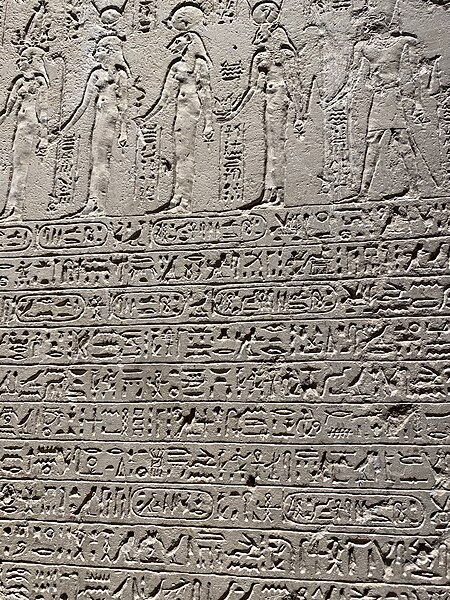The Decree of Canopus is a trilingual inscription in three scripts, which dates from the Ptolemaic period of ancient Egypt. It was written in three writing systems: Egyptian hieroglyphs, demotic, and Koine Greek, on several ancient Egyptian memorial stones, or steles. The inscription is a record of a great assembly of priests held at Canopus, Egypt, on 7 Appellaios (Mac.) = 17 Tybi (Eg.) year 9 of Ptolemy III = Thursday 7 March 238 BC. Their decree honoured Pharaoh Ptolemy III Euergetes; Queen Berenice, his wife; and Princess Berenice.
Decree of Canopus
the Decree of Canopus, on display at the Egyptian Museum in Cairo, Egypt
top portion of the Decree of Canopus, on display at the Egyptian Museum in Cairo, Egypt
middle portion of the Decree of Canopus, on display at the Egyptian Museum in Cairo, Egypt
Canopus, also known as Canobus, was an ancient Egyptian coastal town, located in the Nile Delta. Its site is in the eastern outskirts of modern-day Alexandria, around 25 kilometers (16 mi) from the center of that city. Canopus was located on the western bank at the mouth of the westernmost branch of the Delta – known as the Canopic or Heracleotic branch. It belonged to the seventh Egyptian Nome, known as Menelaites, and later as Canopites, after it. It was the principal port in Egypt for Greek trade before the foundation of Alexandria, along with Naucratis and Heracleion. Its ruins lie near the present Egyptian town of Abu Qir.
Canopus, Egypt
Ptolemaic coins from the submerged Heracleion






